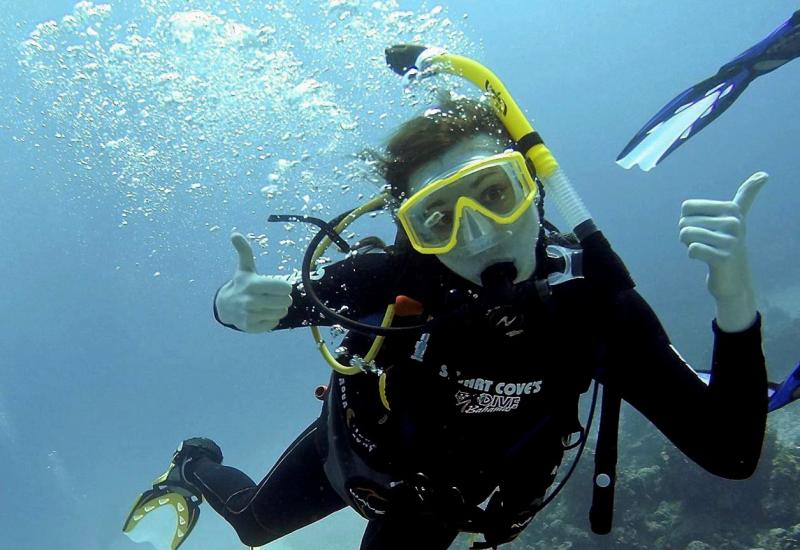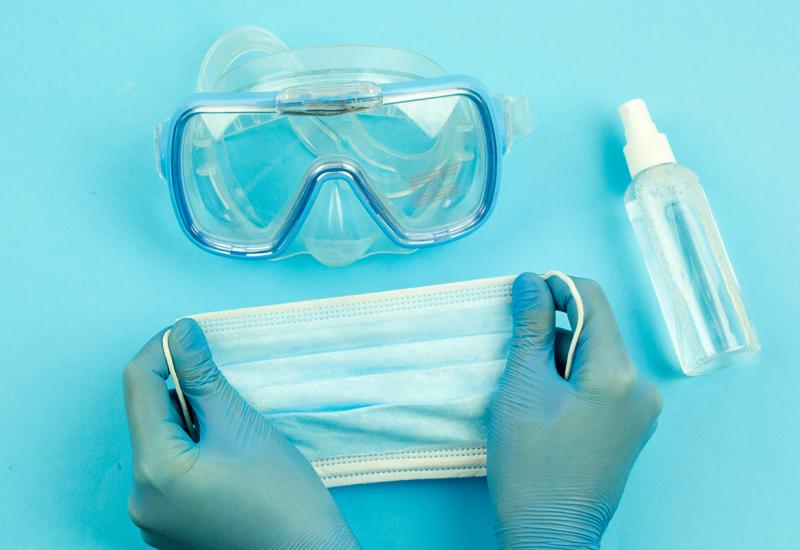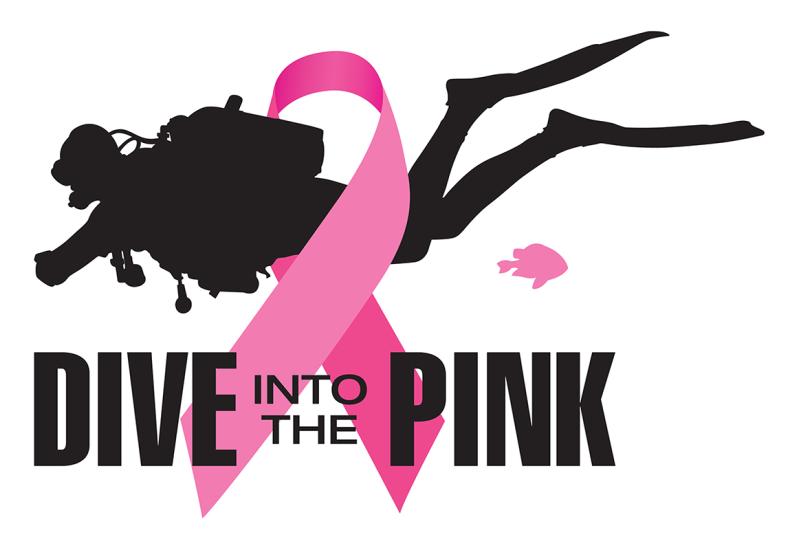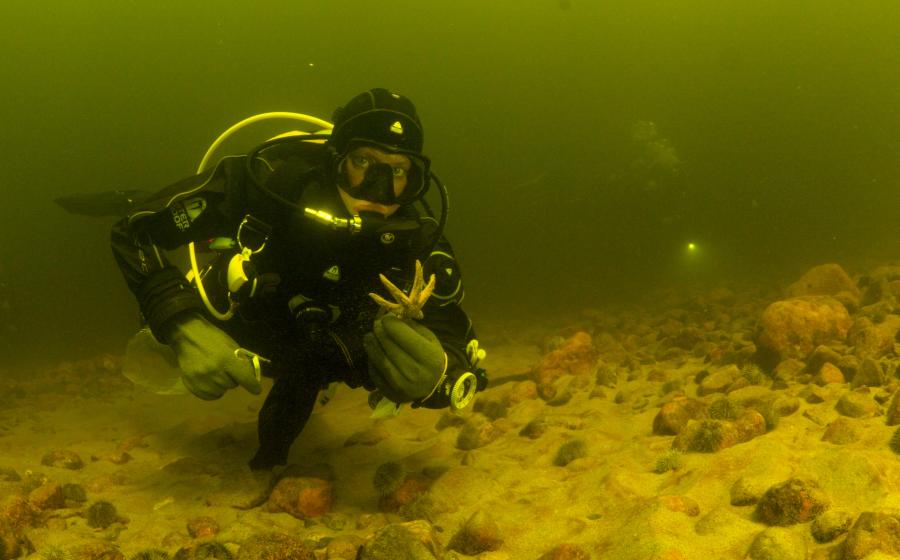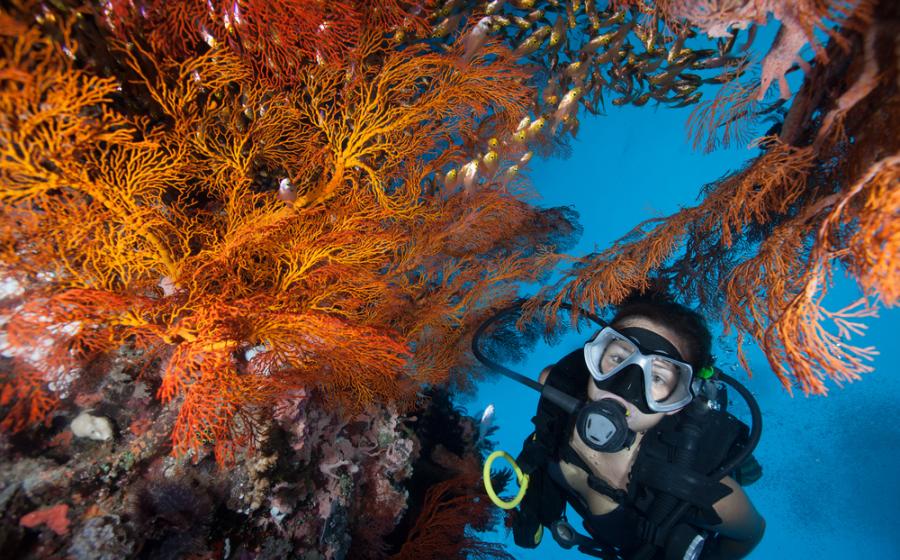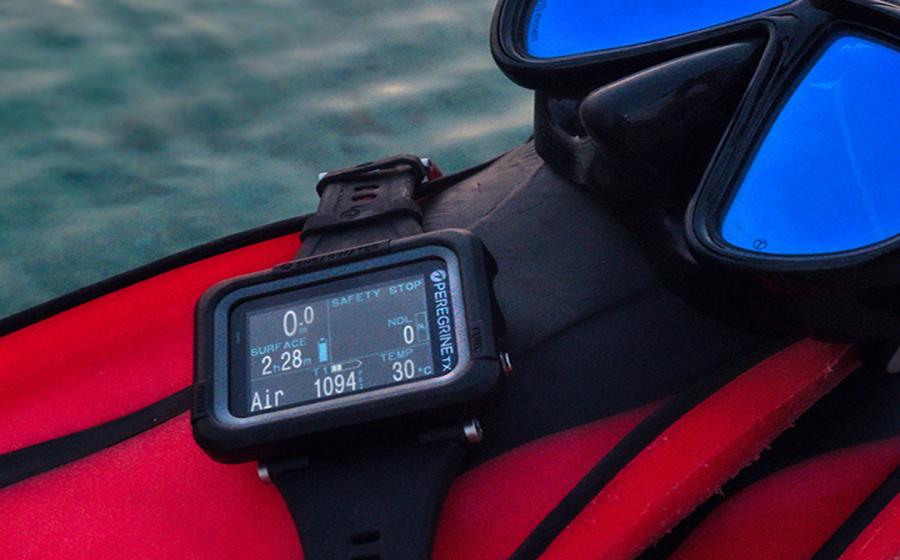The Wetsuit Workout
Ready to go pump some iron? Maybe 50-pounders? Great. We’ll follow that with some deep squats and calf raises before finishing up with a round of step-ups wearing a weighted vest. Sounds like a Navy SEAL workout, right? It’s not. It’s what you do every time you go for a dive and haul heavy tanks, hoist your loaded-down body up skinny ladders, and schlep your bulky gear bags from beach to boat. Add to that the energy it takes to swim across the surface and flip your fins for 30 minutes to an hour.
Little wonder we end up with achy backs and crampy calves. "Scuba requires more strength and muscular endurance than most divers realize," says veteran cave diver and certified health and fitness instructor Cameron Martz, author of Fitness for Divers. "Getting fit for diving means strengthening your muscles and improving your range of motion so it’s easier to gear up and get ready for a dive, as well as swim and enjoy the water once you’re below the surface."
This month’s Wetsuit Workout is designed to target key diving muscles, so you can enjoy multi-dive days without wearing out. Strong muscles also improve your body’s ability to use oxygen efficiently, so your tank lasts longer. Vanity bonus: Increasing your muscle tissue boosts your calorie-burning metabolism, so that wetsuit that mysteriously shrank from last year may fit just right again.
6 Moves to Ship Shape
Do two sets of 12 to 15 of the following moves twice a week to improve your scuba diving strength and stamina.
Scoop and Press
Stand with your feet hip- to shoulder-width apart. Hold weights down at your sides, palms facing your thighs. Bend your knees and hips and drop your butt back as though sitting in a chair. Push back to start, bending your elbows and curling the weights to your chest as you do. As you reach the standing position, immediately press the weights overhead. Lower the weights back to your sides and repeat.
Benefit for divers: Strengthens lifting muscles in your lower body, core, shoulders and arms for hoisting and stowing gear.
Ladder Step
Place your hands on your hips and stand facing a staircase. Step up to the second step with your right foot and raise your left leg behind you, squeezing your glutes. Swing the left leg forward, bringing the knee in toward your chest, before stepping back down with the left leg. Repeat for a full set. Then switch legs.
Benefit for divers: Targets the climbing and stabilizing muscles from the waist down to make getting on and off the boat a breeze.
Push & Row
Holding two dumbbells, get into a push-up position with arms extended, hands under your shoulders, with the weights running parallel with your body (if that’s too hard, assume a modified push-up position with legs bent with knees on the floor). Bend arms and lower chest toward the floor until your upper arms are parallel to the floor. Push back up. When at the top of the push-up position, immediately bend the right elbow and pull the weight up to the side of your chest. Lower back to starting position. Perform another push-up, this time lifting the opposite arm. Alternate arms throughout the set.
Benefit for divers: Puts more power in your arms, chest, back and shoulders for loading and unloading gear.
Seated Scissors
Scoot to the edge of a sturdy chair or bench and sit straight up. Extend legs straight in front of you, feet as far off the floor as comfortably possible, about hip- to shoulder-width apart. Point your toes and turn your legs out slightly. Keeping your legs straight, cross your left ankle over the right, then your right over the left. Keep switching quickly 20 to 30 times. Make the move harder by holding your arms out in front of you.
Benefit for divers: Targets little-used muscles in your inner thighs, hips and calves for better finning.
Swimming
Lie facedown on the floor (you can put a folded towel under your forehead), with your arms extended overhead, palms flat on the floor and legs extended, toes pointed. Contract your glutes and upper-back muscles, and raise your right arm and left leg as high as comfortably possible. Pause, lower to start, and repeat to the opposite side.
Benefit for divers: Strengthens back extensor and glute muscles for super swimming stamina.
Sock Wave
Stand barefoot with feet hip-width apart facing a sock on the floor directly in front of your right foot. Lift your right foot off the floor and grasp the sock with your toes. Holding the sock, extend your leg at a 45-degree angle in front of your body and flex and point your foot as though waving with the sock. Complete a full set. Drop the sock, and switch sides.
Benefit for divers: Cramp-proofs your feet and calves by strengthening the muscles that support the arch of your foot and flex your ankles as you fin.
And Before the Dive...
Most of us wouldn't step onto the golf course, tee up and start driving away without taking a few easy swings to get the blood flowing. It's equally wise not to jump into the water without warming up. A good warm-up boosts circulation and lubricates your joints and muscles so you can shimmy into your wetsuit, hoist your tanks and get up and down the ladder with ease. And it's easy to do. Perform a couple of simple squats. Do push-ups against a wall. Put your hands on your hips, and twist your torso left and right. Make easy windmills with your arms. Pay attention to places in your body that feel tight and give them a stretch. That's it. With just two minutes of easy activity, your muscles and joints are ready for the rigors ahead.
Can You Strengthen Your "Breathing Muscles?"
You may have seen ads for "breathing training" devices like the PowerLung that promise to increase your lung capacity and improve your breathing so you can dive deeper and get more time out of every tank. These inhaler-like products provide variable resistance against which you inhale and exhale to strengthen your respiratory muscles like those between your ribs, which some experts believe are the first to fatigue during underwater activities. In one recent study, volunteers who performed 30 minutes of respiratory training five days a week for four weeks improved their scuba swimming time by 66 percent. Impressive results. But it's important to note that most published studies are done on laboratory equipment, not commercial devices. "We can't speak to the usefulness of commercial devices since we have not tested them," says study author Claes E. G. Lundgren, M.D., Ph.D., of the State University of New York at Buffalo, who concedes that home devices could be helpful. Thirty minutes a day is also a long time (though PowerLung claims benefits in just 10 minutes a day) to devote to respiratory training. But some free divers swear by it. If you feel limited by your breathing capacity, it could be worth checking out. ($85; www.powerlung.com)
Ready to go pump some iron? Maybe 50-pounders? Great. We’ll follow that with some deep squats and calf raises before finishing up with a round of step-ups wearing a weighted vest. Sounds like a Navy SEAL workout, right? It’s not. It’s what you do every time you go for a dive and haul heavy tanks, hoist your loaded-down body up skinny ladders, and schlep your bulky gear bags from beach to boat. Add to that the energy it takes to swim across the surface and flip your fins for 30 minutes to an hour.
Little wonder we end up with achy backs and crampy calves. "Scuba requires more strength and muscular endurance than most divers realize," says veteran cave diver and certified health and fitness instructor Cameron Martz, author of Fitness for Divers. "Getting fit for diving means strengthening your muscles and improving your range of motion so it’s easier to gear up and get ready for a dive, as well as swim and enjoy the water once you’re below the surface."
This month’s Wetsuit Workout is designed to target key diving muscles, so you can enjoy multi-dive days without wearing out. Strong muscles also improve your body’s ability to use oxygen efficiently, so your tank lasts longer. Vanity bonus: Increasing your muscle tissue boosts your calorie-burning metabolism, so that wetsuit that mysteriously shrank from last year may fit just right again.
6 Moves to Ship Shape
Do two sets of 12 to 15 of the following moves twice a week to improve your scuba diving strength and stamina.
Scoop and Press
Stand with your feet hip- to shoulder-width apart. Hold weights down at your sides, palms facing your thighs. Bend your knees and hips and drop your butt back as though sitting in a chair. Push back to start, bending your elbows and curling the weights to your chest as you do. As you reach the standing position, immediately press the weights overhead. Lower the weights back to your sides and repeat.
Benefit for divers: Strengthens lifting muscles in your lower body, core, shoulders and arms for hoisting and stowing gear.
Ladder Step
Place your hands on your hips and stand facing a staircase. Step up to the second step with your right foot and raise your left leg behind you, squeezing your glutes. Swing the left leg forward, bringing the knee in toward your chest, before stepping back down with the left leg. Repeat for a full set. Then switch legs.
Benefit for divers: Targets the climbing and stabilizing muscles from the waist down to make getting on and off the boat a breeze.
Push & Row
Holding two dumbbells, get into a push-up position with arms extended, hands under your shoulders, with the weights running parallel with your body (if that’s too hard, assume a modified push-up position with legs bent with knees on the floor). Bend arms and lower chest toward the floor until your upper arms are parallel to the floor. Push back up. When at the top of the push-up position, immediately bend the right elbow and pull the weight up to the side of your chest. Lower back to starting position. Perform another push-up, this time lifting the opposite arm. Alternate arms throughout the set.
Benefit for divers: Puts more power in your arms, chest, back and shoulders for loading and unloading gear.
Seated Scissors
Scoot to the edge of a sturdy chair or bench and sit straight up. Extend legs straight in front of you, feet as far off the floor as comfortably possible, about hip- to shoulder-width apart. Point your toes and turn your legs out slightly. Keeping your legs straight, cross your left ankle over the right, then your right over the left. Keep switching quickly 20 to 30 times. Make the move harder by holding your arms out in front of you.
Benefit for divers: Targets little-used muscles in your inner thighs, hips and calves for better finning.
Swimming
Lie facedown on the floor (you can put a folded towel under your forehead), with your arms extended overhead, palms flat on the floor and legs extended, toes pointed. Contract your glutes and upper-back muscles, and raise your right arm and left leg as high as comfortably possible. Pause, lower to start, and repeat to the opposite side.
Benefit for divers: Strengthens back extensor and glute muscles for super swimming stamina.
Sock Wave
Stand barefoot with feet hip-width apart facing a sock on the floor directly in front of your right foot. Lift your right foot off the floor and grasp the sock with your toes. Holding the sock, extend your leg at a 45-degree angle in front of your body and flex and point your foot as though waving with the sock. Complete a full set. Drop the sock, and switch sides.
Benefit for divers: Cramp-proofs your feet and calves by strengthening the muscles that support the arch of your foot and flex your ankles as you fin.
And Before the Dive...
Most of us wouldn't step onto the golf course, tee up and start driving away without taking a few easy swings to get the blood flowing. It's equally wise not to jump into the water without warming up. A good warm-up boosts circulation and lubricates your joints and muscles so you can shimmy into your wetsuit, hoist your tanks and get up and down the ladder with ease. And it's easy to do. Perform a couple of simple squats. Do push-ups against a wall. Put your hands on your hips, and twist your torso left and right. Make easy windmills with your arms. Pay attention to places in your body that feel tight and give them a stretch. That's it. With just two minutes of easy activity, your muscles and joints are ready for the rigors ahead.
Can You Strengthen Your "Breathing Muscles?"
You may have seen ads for "breathing training" devices like the PowerLung that promise to increase your lung capacity and improve your breathing so you can dive deeper and get more time out of every tank. These inhaler-like products provide variable resistance against which you inhale and exhale to strengthen your respiratory muscles like those between your ribs, which some experts believe are the first to fatigue during underwater activities. In one recent study, volunteers who performed 30 minutes of respiratory training five days a week for four weeks improved their scuba swimming time by 66 percent. Impressive results. But it's important to note that most published studies are done on laboratory equipment, not commercial devices. "We can't speak to the usefulness of commercial devices since we have not tested them," says study author Claes E. G. Lundgren, M.D., Ph.D., of the State University of New York at Buffalo, who concedes that home devices could be helpful. Thirty minutes a day is also a long time (though PowerLung claims benefits in just 10 minutes a day) to devote to respiratory training. But some free divers swear by it. If you feel limited by your breathing capacity, it could be worth checking out. ($85; www.powerlung.com)

